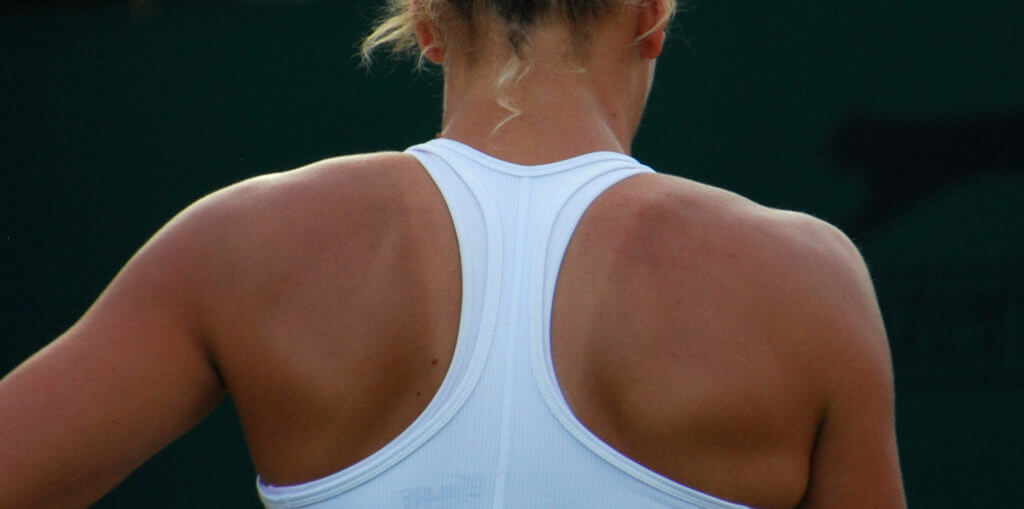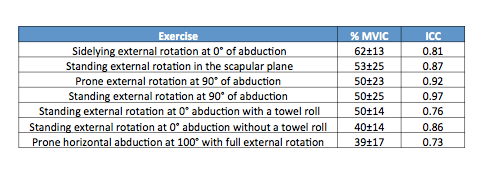The best exercise for infraspinatus

It is well accepted that the rotator cuff muscles of the shoulder are important in the prevention and rehabilitation of shoulder injuries. Among other mechanisms, these muscles may help to centre the humeral head in the glenoid and prevent superior migration during arm elevation. Furthermore, appropriate and progressive loading of the rotator cuff is a necessary stimulus for improving the health of pathological tendons.
Strength of the rotator cuff, particularly the external rotators, is critical for a healthy shoulder. In overhead athletes, exercises to strengthen the infraspinatus is advisable due to the strength ratio imbalance that occurs over time, with the internal rotators becoming stronger relative to the external rotators (Lin et al 2015).
Research has shown that the side-lying shoulder external rotation evokes the greatest EMG activity of the infraspinatus compared with other exercises. The results from the study by Reinold et al (2004) are presented in the following table.

While the greatest EMG activity of infrapsinatus is evoked during the side-lying exercise, this does mean that external rotation exercises at higher abduction angles should not be performed. Greater degrees of abduction still results in significant rotator cuff activity, and also is a more specific position for the throwing athlete. Functional rehabilitation is important, and therefore strengthening in higher degrees of elevation should be incorporated. However the side-lying exercise may be best performed in the early stages of rehabilitation as it also reduces the potential for excessive upper trapezius activity compared with the lower and middle trapezius (Cools et al 2007).
When performing the exercise many clinicians believe it is better to place a rolled towel between the elbow and the patient’s side to avoid compensatory movements (De Mey et al 2012). In the standing resisted external rotation exercise use of a towel roll can lead to higher activity of the external rotators (Reinold et al 2004).
REFERENCES
Start your free 30 day trial now
Discover what TrackActive Pro can do for you and your patients with a no risk, 30 day, free trial.